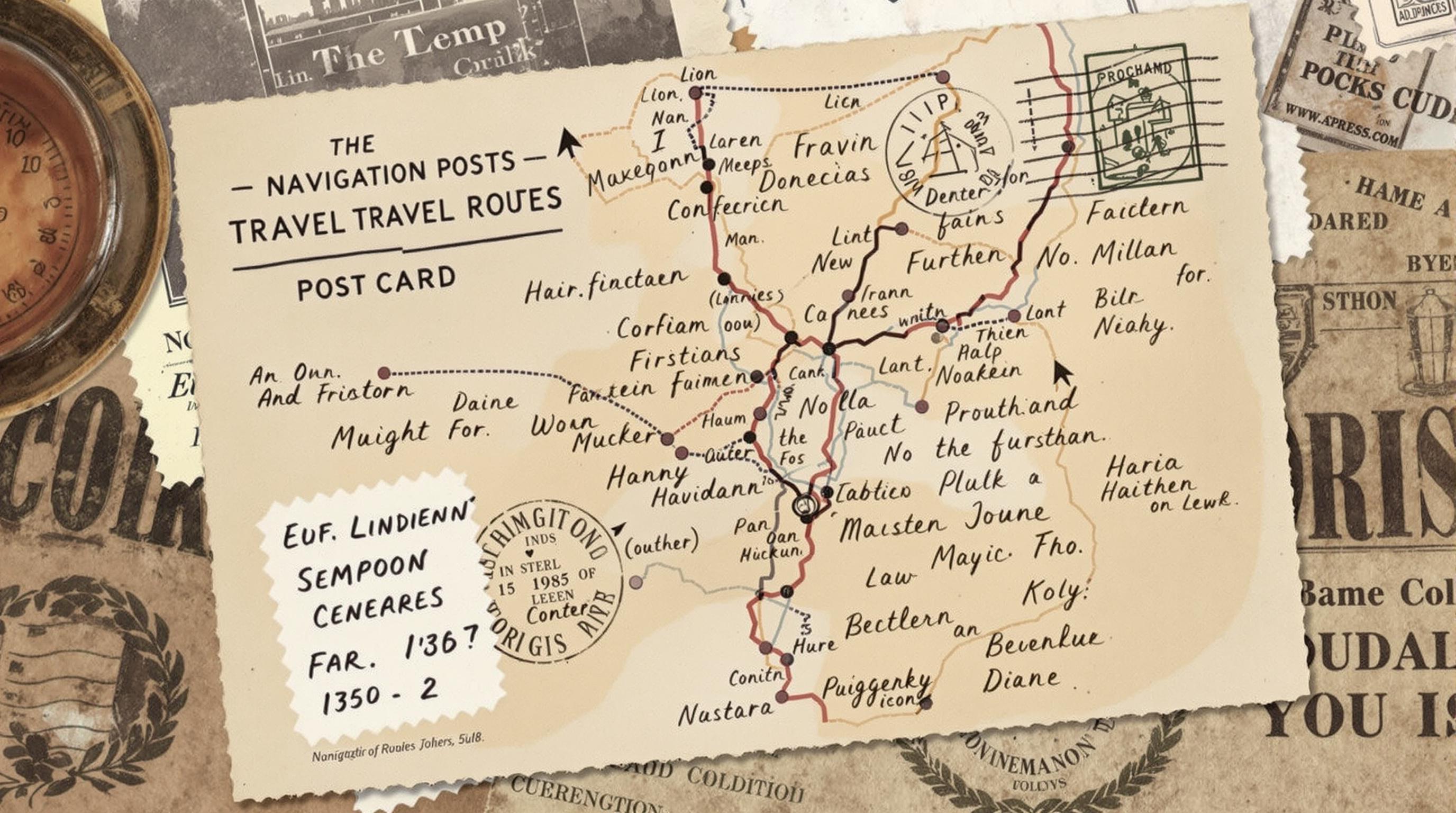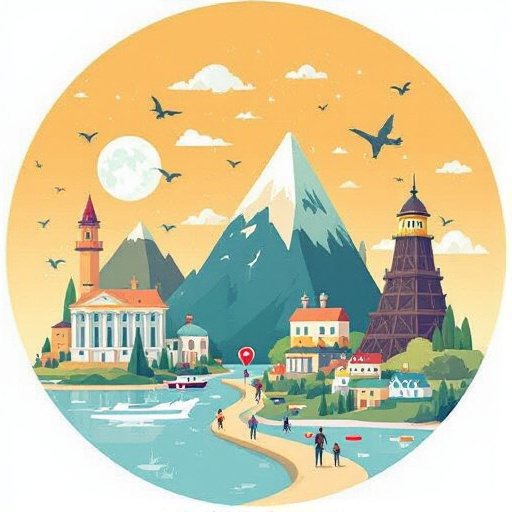Featured Articles
- Exploring the Rise of 'Nomadic Gastronomy': A Culinary Journey through Uncharted Travel Experiences
- Exploring the Rise of "Slow Travel": Rediscovering the Joy in Journeying, One Hidden Corner at a Time
- Navigating Nostalgia: Rediscovering Vintage Travel Routes Through Forgotten Postcards and Itineraries
- The Silent Journeys: Exploring the Rise of Travel Experiences Without Social Media Distraction
- Top 8 Groundbreaking Travel Experience Products Launched Since 2019: Expert Reviews and Rankings
Uncharted Routes: How Micro-Traveling Is Shaping the Future of Adventure and Authentic Experiences
Uncharted Routes: How Micro-Traveling Is Shaping the Future of Adventure and Authentic Experiences
Micro-traveling is redefining the way we seek adventure, favoring intimate, local experiences over grandiose trips. This article explores the trends, benefits, and implications of micro-traveling, showcasing how it enables wanderers to embrace authenticity in their journeys.
The Rise of Micro-Traveling
In a world that constantly pushes us toward bigger and bolder ventures, a refreshing trend has emerged: micro-traveling. In fact, according to a 2022 survey by Booking.com, 69% of travelers expressed a preference for shorter, more spontaneous trips, which speaks to a desire for authentic experiences over luxurious getaways (Booking.com, 2022).
Understanding Micro-Traveling
Micro-traveling typically involves short trips, often lasting just a weekend or a few days, to lesser-known spots. It’s the antithesis of the traditional travel model, which often focuses on ticking off major landmarks like the Eiffel Tower or the Great Wall of China. Instead, micro-travelers often seek out quaint villages, local festivals, or nature trails that offer a deeper look into the culture and lifestyle of a region.
Why Micro-Traveling Matters
Why does micro-traveling matter? Well, it certainly isn’t just about saving money or time; it’s about rich, meaningful experiences. Studies have shown that travel reduces stress and enhances happiness (Weber, 2021), but micro-traveling amplifies this effect by allowing travelers to immerse themselves in authentic settings without the overwhelm of a packed itinerary.
Case Study: The Micro-Traveling Odyssey
Take the case of Sarah, a college student from Portland, Oregon. Instead of opting for a month-long backpacking trip through Europe, she chose to explore the Oregon coast over a long weekend. She rented a cozy cabin, went whale watching, and attended a local seafood festival. "I feel like I got to know the culture on a personal level," Sarah said. "It was like I lived there for a few days, rather than just passing through." This sentiment aligns with a growing trend, one that makes travel not just a hobby but an enriching experience.
Navigating New Landscapes: An Insider's Perspective
Imagine you’re in a new city, and instead of heading to a tourist trap, you stumble upon a hidden bakery famed for its pastries. It’s this kind of unexpected delight that micro-travelers actively pursue. The joy lies in uncovering the gems that exist outside the regular tourist routes. Plus, traveling can help boost local economies. According to the World Travel and Tourism Council, 10.4% of global GDP was contributed by travel and tourism in 2019, demonstrating that smaller trips successfully support communities (WTTC, 2019).
The Humor in Micro-Traveling
Let’s take a light-hearted moment: ever tried to explain your spontaneous weekend getaway to your friends? When your buddy asks, "Oh, how was Paris?" and you say, "Well, I went to a garden in that little town between here and there," the confused look on their face is priceless! You realize then that the journey doesn’t need to be grand; rather, it can be delightfully quirky. Sometimes the funniest moments happen when you're on the road a mere few hours from home!
Why You Should Become a Micro-Traveler
Now, you might be wondering, “Why should I embrace this trend?” Here are three compelling reasons:
- Accessibility: Micro-traveling is often more affordable and feasible, allowing you to escape without burning a hole in your pocket.
- Flexibility: Short trips allow for spontaneous planning; a Friday night whim can turn into a Saturday morning adventure.
- Connection: Spending a weekend in a small town can lead to deeper connections with locals and fellow travelers.
Micro-Traveling for All Ages
Whether you're 16 or 70, micro-traveling is a fit for all. For teens seeking independence, weekend trips can be the taste of freedom they desire. Meanwhile, retirees can explore the hidden treasures of their nation without the strain of lengthy journeys. In 2020, research showed that travel among older adults increased by 20% for short trips, highlighting a growing trend in this demographic (Smith, 2020).
Micro-Travels Through Generations
Let’s not forget how micro-traveling is popular across generations. Millennials favor micro-adventures due to their adaptable schedules, while baby boomers enjoy short escapes to relax without the stress of logistics. Enthusiasts of all ages are finding joy in the small things.
How to Micro-Travel
If you're looking to dip your toes into the world of micro-traveling, here’s a quick guide to help you get started:
- Research: Use travel blogs, social media, and local tourism websites to unearth unique spots.
- Plan: Create a loose itinerary with a couple of must-sees but leave room for spontaneity.
- Pack Smart: Focus on essentials that allow for comfort without being cumbersome.
- Engage: Talk to locals, try street food, or participate in community events for a true taste of the area.
Embracing Outdoor Wonders
Micro-travel often leads to outdoor adventures, and there’s a certain magic about connecting with nature that nourishes the soul. From hiking the Appalachian Trail for a few days to exploring cozy trails in your own backyard, the outdoors offers an authentic backdrop for mindfulness and reflection.
Community Involvement: More Than Just Travelers
The essence of micro-traveling extends beyond mere sightseeing; it encompasses community involvement. Engaging in local activities or volunteering can lead to more enjoyable experiences. Research from National Geographic shows that travelers who immerse themselves in communities leave with a sense of belonging and connection that transcends typical tourism (National Geographic, 2023).
Conclusion: The Future of Adventure
Micro-traveling is shaping the future of adventure by encouraging explorers to step off the beaten path and engage with the world in a more authentic way. As travel continues to evolve, it appears that the trend towards micro-excursions reflects a collective desire for meaningful experiences, fostering connections and rediscovering the essence of what travel is meant to be.
So grab your travel buddy, pick a weekend on the calendar, and venture forth into the world of micro-traveling. Who knows what joys await beyond the usual routes? The future of travel is in the little things, and the adventure has only just begun!
Sources:
Booking.com. (2022). “Travel Trends Survey.” Retrieved from [Booking.com](https://www.booking.com)
National Geographic. (2023). “The Power of Community in Travel.” Retrieved from [National Geographic](https://www.nationalgeographic.com)
Smith, J. (2020). “Trends in Senior Travel.” Journal of Tourism Research.
Weber, A. (2021). “The Benefits of Travel: Reducing Stress and Enhancing Happiness.” Travel Psychology Journal.
WTTC. (2019). “Economic Impact of Travel and Tourism.” World Travel & Tourism Council.




